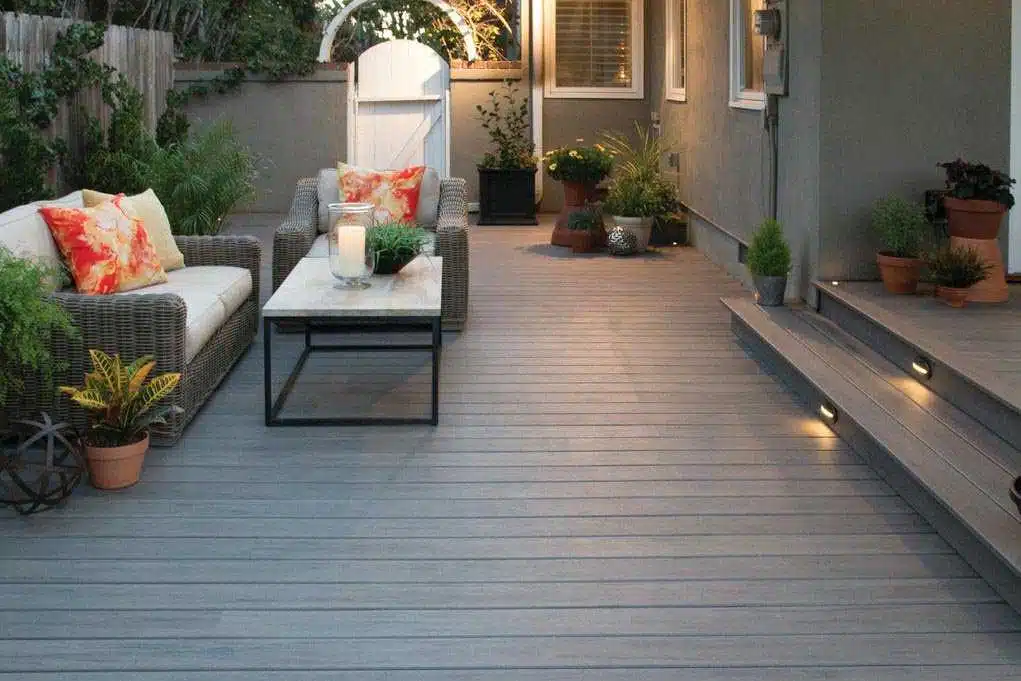If we had a dollar for every false claim about composite decking, we could probably build a whole deck from scratch. Even though composite decking is more popular than ever, many myths still confuse buyers.
Here are the ten most common misconceptions, explained and corrected.
1. Timber Is Better Because It’s Natural
Many believe timber is the better choice simply because it’s natural. But that’s not the full story. Composite boards, like those from Superdeck, are made from recycled wood fibres and high-density plastic. This makes them more environmentally friendly.
Timber often comes from logging, which harms forests. Composite decking helps reduce waste. It also avoids the use of harsh chemicals and needs far less maintenance. Over time, it’s the more sustainable option.
2. Composite Decking Is Hard to Install
Some assume composite decking is difficult to install. In reality, it’s often easier than timber. Many products are made with DIY users in mind. They come with easy guides and video tutorials. Some boards even have hidden fastening systems that make installation quicker and cleaner.
You can also get matching framing systems and accessories. These help beginners build strong, well-finished decks without needing expert help.
3. Composite Decking Costs Too Much
Timber can seem cheaper at first. But add in the costs of sealing, sanding, and repairs, and the price adds up. Composite decking costs more upfront but saves money later. It doesn’t need much maintenance, and it lasts longer.
For example, Superdeck’s products don’t need staining or sealing. This means less work and more savings over time.
4. All Decking Requires Too Much Maintenance
Timber decks need constant care. You have to sand, seal, and stain them often. If you don’t, they rot and split. Composite decking doesn’t have this problem. It only needs a light clean with soap and water now and then.
It won’t rot, warp, or crack like timber. That makes it ideal for wet or humid areas.
5. Composite Decking Attracts Mould and Mildew
Some worry about mould on composite boards. That might be true for cheap products, but not for quality ones. Good boards have protective caps that block moisture.
Even if mould appears, it stays on the surface. You can clean it easily without damaging the deck.
6. Composite Decking Stains Easily
People often think composite decking stains like timber. It doesn’t. The surface is non-porous, so spills wipe off easily. Things like wine, grease, or pet mess won’t leave marks if cleaned quickly.
Timber, on the other hand, absorbs stains. It also needs regular sealing to stay clean.
7. Composite Decking Is Slippery
Some low-grade boards may be slippery. But high-quality products are different. Superdeck’s boards, for example, have slip-resistant surfaces. They’re safe for pets, kids, and adults, even in the rain.
Always check the slip rating before buying. This is especially important if your area gets wet often.
8. Composite Decking Gets Too Hot
Some say composite decking gets too hot in summer. It can be warmer than timber, but not hotter than concrete or pavers. Heat depends on the colour and location of the deck.
Lighter colours stay cooler. You can also use outdoor rugs or shade furniture to make the area more comfortable.
9. Composite Boards Scratch Easily
No surface is completely scratch-proof. But composite decking resists scratches better than timber. Marks from pets or moving furniture are usually minor.
You can cover small scratches with touch-up tools made for composites. These boards also resist UV damage. They don’t fade or turn brittle over time like timber can.
10. Composite Decking Sags Because It’s Heavy
Some say composite boards sag because they’re heavier than timber. That’s not true if installed properly. Good framing and support prevent any sagging.
When you follow the installation guide, composite decks stay firm and strong for many years.


 0430 308 829
0430 308 829 James@superdeck.com.au
James@superdeck.com.au